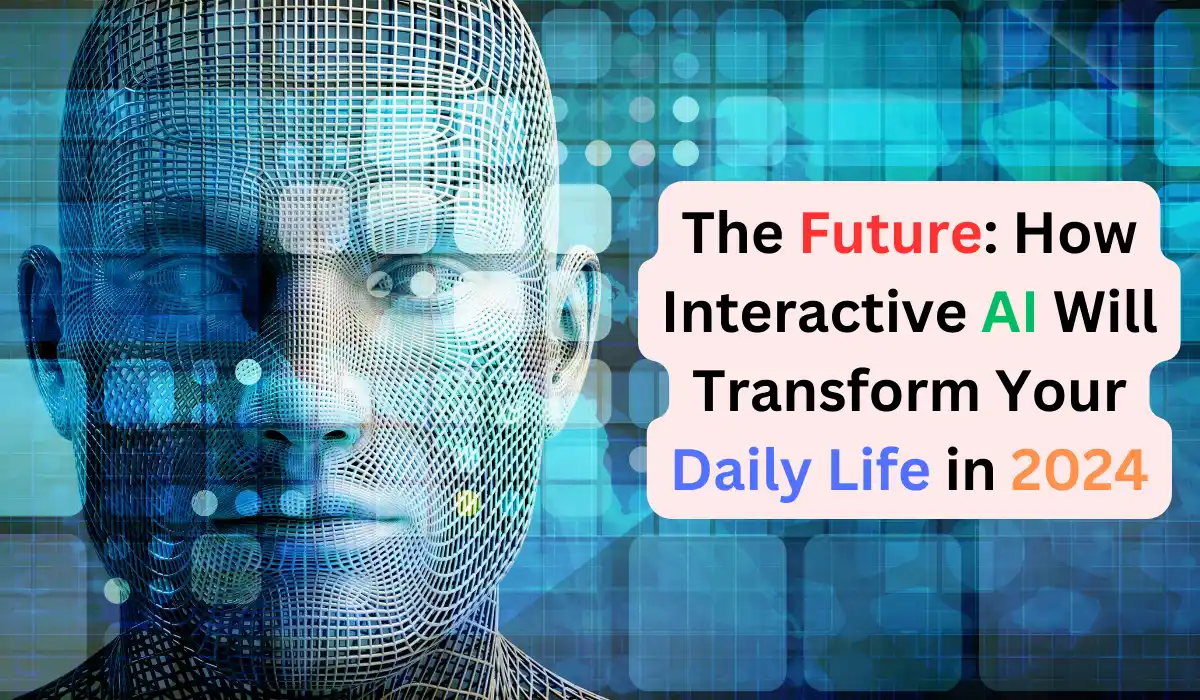Revolutionize Human-Machine: Interactive AI’s Jaw-Dropping Features in 2024
In the dynamic landscape of artificial intelligence, the year 2023 saw the spotlight on AI chatbots. Now, a new era is on the horizon, poised to redefine human-machine interaction: Interactive AI. This groundbreaking technology promises to elevate interactivity and communication to a level previously unseen, opening doors to a plethora of innovative possibilities.
Enhanced Interactivity Redefining AI
A mere year ago, AI chatbots like Chat GPT, Bard, and Llama were relatively unknown. However, they swiftly became household names, revolutionizing content generation and streamlining tasks that traditionally required human intervention. Contrary to initial concerns about job displacement, substantial layoffs have yet to materialize.
Nevertheless, existing AI chatbots faced critique for generating content plagued by blandness, errors, or political and racial biases. Elon Musk’s Grok aimed to address these issues but encountered accusations of its own political bias. As the AI landscape intensifies in competition, tech luminaries foresee a shift towards more interactive AI systems.
Mustafa Suleyman, co-founder of Google DeepMind, envisions the next generation of AI assistants as highly interactive, engaging in nuanced conversations with humans. This shift signifies a move away from conventional command-driven interactions to more natural, human-like conversations. Instead of merely responding to basic commands, future AI tools will discern user intent and autonomously execute tasks.
The Promise of Interactive AI
Interactive AI offers several advantages over its predecessors. A key benefit is its potential to produce more novel and original content, avoiding pitfalls like plagiarism and bias. These advanced AI systems can tackle complex, time-consuming tasks requiring interaction with humans, websites, and other chatbots. Moreover, they can provide regular updates to users on progress or results.
Crucially, interactive AI excels at handling advanced user feedback, preventing the generation of harmful or offensive content. It also ensures the precise delivery of complex projects, reducing the margin for error.
Applications of Interactive AI
The applications of interactive AI span various industries. Companies can leverage this technology to enhance customer service, offering users guidance with a human-like touch through troubleshooting steps. In sales and marketing, interactive AI can revolutionize lead generation and customer retention strategies by providing personalized communication tailored to individual customer needs.
Early-stage AI platforms are already pushing the boundaries of interactivity. Mustafa Suleyman’s Pi AI, known as “your personal AI,” is designed for brainstorming, planning, learning, or simply serving as a platform for venting. Another example is Character.ai, where users can interact with AI assistants crafted with distinct personalities, some inspired by fictional characters or celebrities.
The Timeline for Interactive AI Adoption
While Suleyman predicts that interactive AI will make a significant impact in 2024, other experts suggest that achieving true interactivity with chatbots may require a few more years of development and refinement. The timeline for widespread adoption hinges on technological advancements and user acceptance.
Bill Gates anticipates that AI is on the verge of “supercharging the innovation pipeline,” with widespread adoption expected in high-income countries like the US within the next 18 to 24 months. Gates also envisions African countries catching up in AI adoption within three years. However, the swift expansion of AI technology raises concerns about its potential to replace white-collar jobs in fields such as finance, legal, and medicine. While the impact on employment has been relatively limited thus far, some experts believe that creative and professional positions may eventually succumb to automation.
The Dark Side of AI in 2024
Amid the excitement surrounding AI’s evolution, concerns loom on the horizon. Tech analysts have raised alarms about the proliferation of AI-generated deepfake videos and the spread of disinformation. The upcoming US presidential election in November has been dubbed a potential “deepfake election,” with voters struggling to discern real from fabricated content. As AI becomes more sophisticated, combating deepfakes and misinformation poses a significant challenge.
In conclusion, the dawn of Interactive AI promises a new era of human-machine interaction characterized by enhanced interactivity and human-like communication. This technology, as it evolves and matures, holds the potential to reshape industries, improve customer service, and revolutionize content generation. However, the rapid spread of AI also raises concerns about job displacement and the challenges of combating deepfakes and misinformation. The future of AI teeters on a precipice, with both promise and peril on the horizon.



